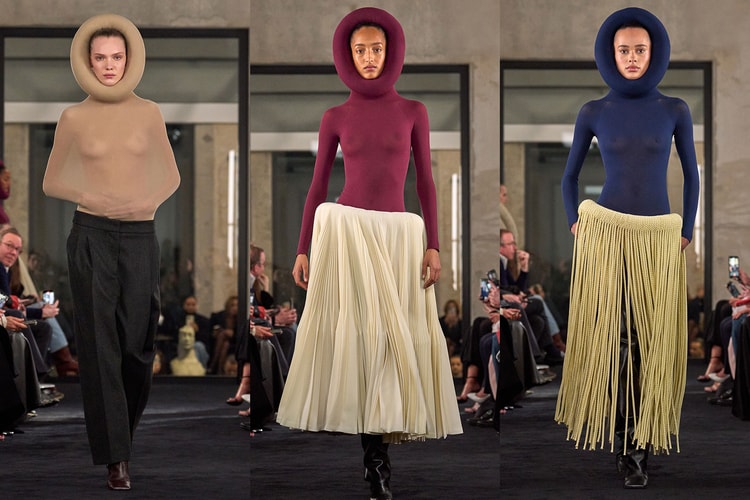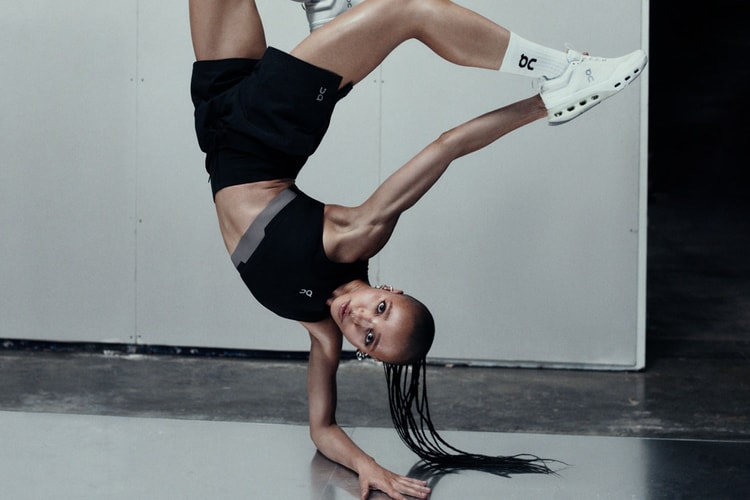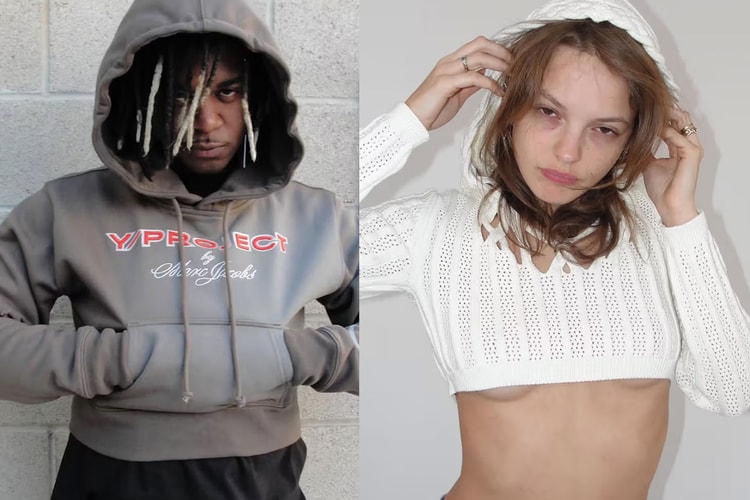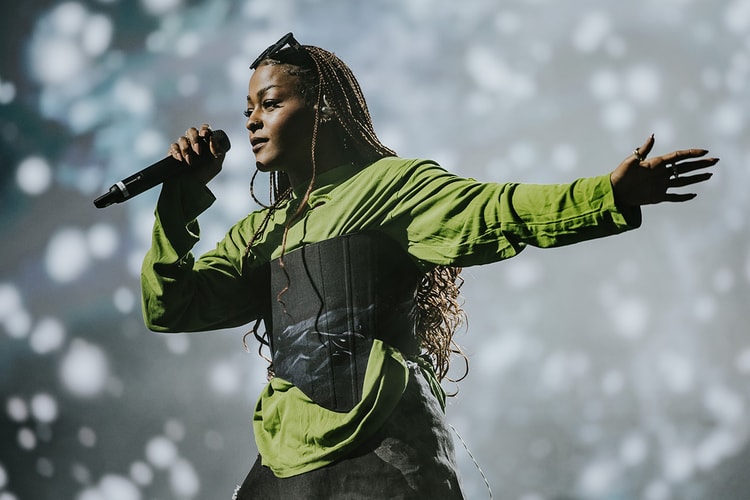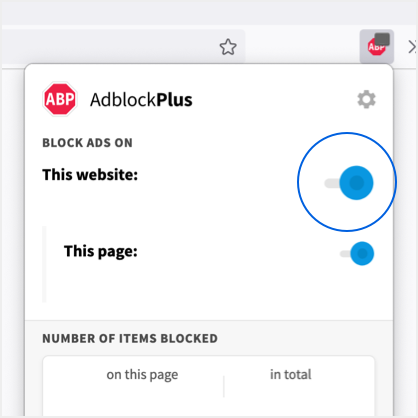ABLONDI Is the New London-Based Label Celebrating the Female Protagonists of Today
Founded by former design assistant at Moschino, Arianna Ablondi Pedretti.
“My goal was always to be a creative director, and, as a woman, the only way to do that is to have your own brand.” That’s the view of Arianna Ablondi Pedretti, a former design assistant at Moschino who left big brand life to pursue her own label. After graduating from London’s Central Saint Martins, Pedretti cut her teeth at the luxury brand but learned quite quickly that going her own way was going to be her destiny.
Inspired by the women around her, along with the female protagonists of ’70s Hollywood, the designer created her label in 2024. Named ABLONDI, after her mother, the brand looks to create “a contradictory wardrobe” in a bid to mimic “the female experience on Earth.” Described as both “political and dazzling,” “functional yet feminine” and “erotic but not hypersexualized,” the brand favors sensual silhouettes with a playful twist, always putting women and their needs at the forefront of its design.
As ABLONDI releases its new Fall/Winter 2025 collection, we caught up with Pedretti to find out more about the journey to becoming a founder, the importance of working with family-run factories and what it means to be a female protagonist today.
Read on for the full interview.

Tell us a bit about how the brand came about. What inspired you to pursue design after studying at CSM?
After my BA in Italy, I briefly worked at Moschino in Milan, and I quickly realized that being in a design studio wasn’t something I really saw myself doing long-term. My goal was always to be a creative director, and, as a woman, the only way to do that is to have your own brand. So, the main motivation after finishing CSM came from the idea of doing what I truly wanted every day, which is researching, designing and learning through the knowledge of the makers here in Italy. Of course, having a brand and being independent comes at a price and you’re never really free to do what you want if you don’t have the means to do so. But that I discovered only later. It wasn’t a logical decision because if you are pragmatic and logical, you would never open a brand in this day and age. Am I right?
How would you describe the brand for those who aren’t familiar with your work?
What I try to do with ABLONDI is to create a feminist uniform and aesthetic. To play with stereotypes. To design a wardrobe that is political and dazzling, high and low, functional yet feminine, erotic but not hypersexualized, avoiding both the hyper-feminine and masculinized aesthetics from which women have traditionally been forced to choose. A contradictory wardrobe, as is the female experience on Earth.

Using local, family-run factories and ateliers is something that ABLONDI focuses on. Why is that important to you?
The relationship with suppliers and factories is a core value to the brand. It’s not just a tool; together with the research, it’s the base of each collection. I am a strong believer in the fact that artisans and manufacturers are what have always nourished designers here in Italy and vice versa. Fashion here in Italy is actually quite young; before the 70s, all we had were artisans and well-made clothes. Italian fashion and pret-à-porter as we know it today truly comes from this liaison between the creative minds of designers in the 70s and 80s and the equally creative and genius minds of the people in the factories.
Even when I was at CSM during my master’s, I would always research new techniques and quite literally knock on the doors of these places, often driving to the middle of nowhere to meet them. I would listen to their families’ stories and I could always see how connected they were to their craft, which was very inspiring to me. I have the chance to be in a very strategic location here in Italy, so I want to make the most of it while it lasts. I also think that real sustainability can only come from the collaboration of factories, designers and new technology and ideas. Right now, I know that some of these places are shutting down and it’s quite sad, but I’m hopeful.
For your AW25 collection, titled La Bellissima Che Uccide, you took inspiration from female protagonists from the 60s and 70s. Who would you say are the female protagonists of today? Who are you inspired by?
Women truly inspire me every day, and most of the time, it’s my friends, the women I work with and the women I randomly see on the streets. I often become friends with the models I work with because I really feel like I need to have a connection with the women I dress. I also have a strong connection with theatre, dance, performance and cinema, and I always find myself amazed by the women working in these fields.

I worked with Emma Chamberlain right after my master’s and I really see her as one of the protagonists of today’s world. Chloe Sevigny is someone I look up to and would love to collaborate with one day. I think Rachel Sennott is amazing. Zendaya too.
Playful detailing seems to be a big part of ABLONDI’s pieces, often in the form of fur trims and pom poms. Where does the inspiration behind these details come from?
Details and accessories (especially soft ones and leather goods) are a big part of my design language in general. I always feel like I can express a concept in a very effective way using accessory design or through a small, detailed trim. Usually, it has something to do with a sense of illusion. I think that being at Moschino just after my BA inspired me a lot in that sense, especially looking at the archive of Franco Moschino. There, I learned that to be fun in a clever way, ‘ironically’ you might say, you first need to have a point of view and you need to be political. For me, playfulness for the sake of it can mean that items become toys rather than accessories.
The Pompom Bag, the Coccarda Bag, the Dice Rings, the fur accessories and, more recently, the Alpina hats, the Drawer Bag and the Clock Bag, all these pieces kind of came to me. I research a lot and then there is a moment where something clicks in my mind and I get the idea. Every one of these pieces has a story. I obviously also work with great women, like stylist and consultant Charlotte Buchal and marketing strategist Agnese Sacchini. I brainstorm with them a lot, so some ideas also come together whilst collaborating with them.

Tell us a bit about your creative process. Where do you typically start when designing a new collection?
I always start with a woman or a group of women and often, the collection contains two main contrasting concepts. I think this brings a sense of depth to both sides of the stories I want to tell. One theme often helps inform the other, in a sense. After a very long period of research, both conceptual and material, I start designing. I always design on paper; I never really drape. I have an image in my head and I sketch it. I don’t spend hours in the studio draping, it’s very fast. The researching is probably my favourite part. The harder but equally interesting part can sometimes be getting from the drawing to the final product; the journey to get there can often be surprising, but I enjoy that.
What are some of ABLONDI’s hopes and goals for the future?
I want to continue to get even more specific with products, collaborating more and more with specialised factories. Beyond fashion, I would love to expand in a more community-focused direction, creating spaces and events for women to come together, spark conversation and bond over cultural experiences. I think there’s something really magical about a group of women coming together and just existing, talking, listening, laughing without any men being there. I want ABLONDI to be a community that empowers that.


